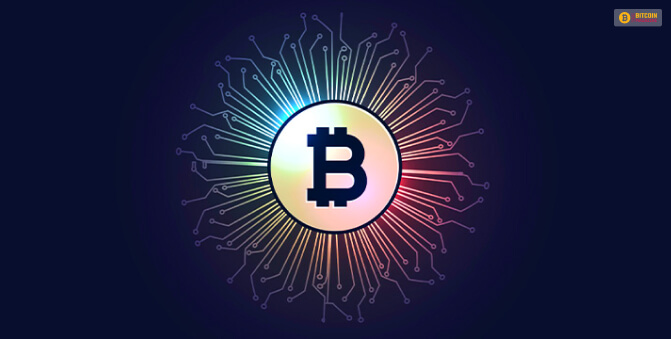As we know, Polygon-minted NFTs and Sonala and Ethereum mostly dominate the NFT marketplace, in recent months, the Bitcoin NFTs have seen a dramatic increase. Bitcoin NFTs are also called Ordinal NFTs or Bitcoin Ordinals. These are anything but Non-Fungible tokens that are built and secure on the networks of Bitcoin.
Before, creating any NFT on the network was difficult because of the simple architecture, and the network lacked smart contracts. However, the emergence of the Ordinals inscription, along with the other layer 2 solutions, has made it possible to create Bitcoin NFTs, and there is a prediction that by the year 2025, it is going to reach $4.5 million. Here in this article, we are going to discuss all about the Bitcoin Ordinals.
What Are Bitcoin Ordinals?

Bitcoin Ordinals is actually a protocol that lets individual satoshis or SATs in a Bitcoin Blockchain assign a unique identifier to itself and make the transaction with extra data attached to it. Casey Rodarmor got the credit for creating the protocol, and it allows NFTs or nun-fungible tokens to be credited directly into the blockchain. These Bitcoin NFTs are also known as Original NFTs, as mentioned earlier.
Two networks created Bitcoin NFTs, Tarroot 2021 and SegWit or Segregated Witness 2017. The SegWit 2017 update resulted in creating a soft fork for Bitcoin and divided the transaction structure into two separate parts, the witness parts and transaction parts. This, as a whole, increased the storage limits.
After SegWit, the update Taproot improved the privacy and security of all Bitcoin transactions, introduced the data inscription and increased the limit of block size by 4 MB. The updates came out just as their own, but this inspired Casey Radarmor to launch the protocol.
How Does It Work?

Bitcoin NFTs were created with inscriptions that are based on the ordinal theory and also work differently from typical smart-contract-based NFs. This theory identifies each and every satoshi as a separate individual unit that could be traded on the network of Bitcoin.
The theory is implemented through the protocol that serializes every satoshi in the order of their mining and tracks them through the transaction on the network. This process of numbering makes the satoshi non-fungible or unique, unlike any other fungible bitcoin.
Once the unique IDs are assigned to the satoshis, users can attach their data to it to create an ordinal NFT. This process of generating NFTs does not create a blockchain separately or make any alteration to the original Bitcoin blockchain.
Where Can Bitcoin Ordinals Be Used?

Here is a list of use cases of these Bitcoin ordinals.
Gaming
In-game assets like accessories, avatars, cosmetics, and skins could be converted to NFTs and could also be offered as incentives to players.
Art & Music
Artists have the possibility to tokenize their music and digital art to preserve them, along with an immutable Bitcoin blockchain. These ordinals can also be used for providing the creators with royalties and the fans as merchandise.
Ticketing
Ticketing these NFTs could be a possible alternative to traditional tickets for entertainment shows, sports events, virtual events, and others. If the third parties are removed, a more transparent and suitable verification process could be provided.
Metaverse
NFTs of properties and lands of a metaverse could be used as tokens and ownership and for developing virtual real estate.
ID & Authentication
NFTs could also be for verifying and representing other identities and allowing them to control the privacy and security of the data.
Fashion & Luxury
NFTs could preserve and authenticate ownership of luxury and fashion items. They can also give access to deals, exclusive offers, and any item related to a particular product or brand.
Real Estate
Real-world properties could also be tokenized in the NFTs as proof of their ownership and authenticity and also for easy transfer between two parties. These could also be integrated with other systems and applications, opening different use cases.
How To Sell And Buy Bitcoin NFTs

Bitcoin NFTs can only be traded with Taproot-compatible wallets like Xverse, Ordinal Waller, and Hiro. Here we have listed the steps for selling and buying NFTs.
For Buying:
- Choose the wallet you prefer and make an account.
- Back up the seed phrase, and set a password for your wallet.
- Deposit some funds to the ordinal waller address.
- Find the section named “collection” and click on it to check the listed Bitcoin NFTs.
- Choose and select the collection you want to buy and click on the “Buy Now” option.
- Complete the process and the transaction followed by it, and the ordinal or NFT will be added to your wallet.
For Selling:
- This process is quite similar to the one we follow for buying. Create the account first, then secure your seed phase and your password.
- Deposit funds to the original wallet.
- Then go to the Ordinal marketplace such as OrdinalsBot, Gamma, etc.
- Select the transcription type, text, or image and then upload it.
- Choose the inscription fee. This fee depends on the size of the inscription and the duration in which the inscription will be completed.
- The ordinal recipient address has to be added before completing the transaction.
- Once the NFT is inscribed on the blockchain, you will be able to view it on Ordinal.com.
Bottom Line
To conclude, Bitcoin NFTs are standing out among the other NFTs with their unparalleled design, security, and immutability. The protocol Bitcoin Ordinal uses, along with the other solutions, contributes to unlocking the potential Bitcoin network has, its development, and its utility.
However, there have been controversies about the Bitcoin NFTs in different web3 communities, which developers are still working on. Overall, these Bitcoin NTFs could be an important investment option for investors of Bitcoin to explore the possibilities they can have on the forthcoming network opportunities.
Additional Reading:

